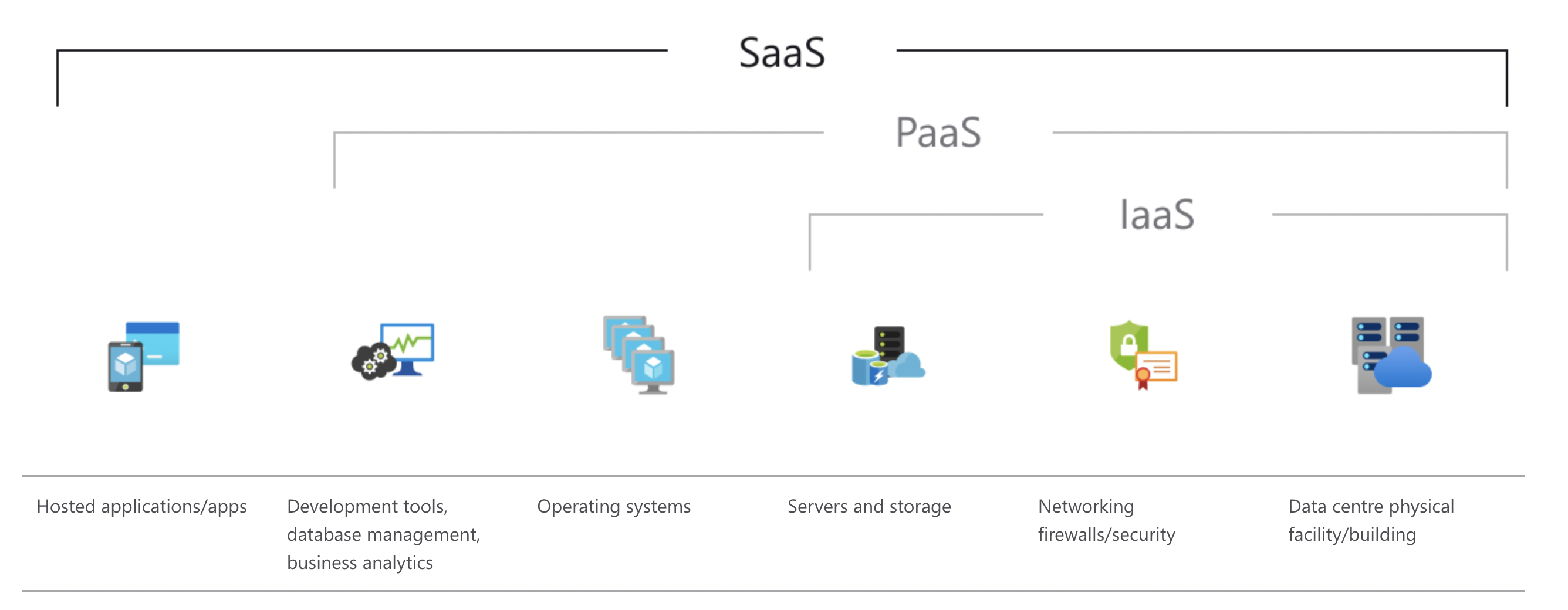Cloud Computing Model & SaaS
Cloud computing model is a technology that provides on-demand network access to a pool of shared resources such as data storage, databases, servers, networking, tools that can be accessed via the internet. Users receive these resources as a service in their local location without the need for software, data access or service infrastructure.
Along with the developing technology, the business service models provided by cloud computing are getting more and more demanded every day. In this context, we see that many new products have started to serve in the relevant markets. Some of the major important advantages:
- Ease of Maintenance
- Cost Efficiency
- Reporting Services
- Security Environment
- Network Accessibility

Image sourced from Microsoft
Cloud Computing Service Models
Cloud computing model is offered in three different services which each satisfy a unique set of business requirements. Infrastructure as a Service (IaaS), Platform as a Service (PaaS) and Software as a Service (SaaS) are the common cloud service models.
Today we will talk about Software as a Service (SaaS) of Cloud Computing Models
The SaaS business model is a complete software solution. It means that you purchase from the service provider by usually subscribing on a monthly or yearly basis. In other words, it is based on the logic of payment as you use it. The service provider meets all technical requirements. The software provides the continuity, usability and security of the service it offers by managing the hardware and infrastructure. You can access the service you have subscribed to from your web browser, mobile or tablet from anywhere you have internet access.
We can give the following products, which you have heard of already, as examples of SaaS business models: Salesforce, Google Docs, Google Drive, StatusEntry, iCloud, Dropbox, Slack, Zendesk, Canva, etc.
Advantages of SaaS Products
Let’s take a closer look at the advantages these SaaS products provide to their users.
Scalability: Downgrade or upgrade your package according to your changing needs
Cost Effective: Pay as you go with flexible payment methods and save your money.
Operation: Since you will receive end-to-end full service, you do not have to download and install any extra software on your personal computer. You don’t have to worry about updating. Also, you don’t have to deal with lengthy license agreements.
Accessibility: You can access the service 24/7 from your web browser, mobile app or tablet (if the service provider supports it) from anywhere in the world with internet access.
Storage: The application you receive service and your related data are saved in the cloud at regular intervals, so data loss is prevented even if your computer or system crashes.
Reporting: Depending on the service provider, you can analyze your data through various tools and generate detailed reports.
Security: Ensuring security is also the responsibility of the service provider, so you will not have to do any extra work.
Drawbacks of SaaS Products
Although SaaS applications have effective advantages, we should also mention some minor drawbacks in terms of both users and service providers.
Limited Control: Because service providers manage everything related to their products, you can control some properties to the extent and capability that the vendor allows.
Customization: Although SaaS service providers offer the ability to customize to their users, they generally allow a limited level of permission.
Unforeseen Technic Problems: Service providers always promise to provide uninterrupted and complete service to their users. However, from a realistic point of view, this is not always a situation that can be managed. Due to unforeseen technical reasons, service providers may have a difficult time.
One of the most important success criteria in the SaaS business model is to ensure the trust of users. Therefore, service providers should pay attention to is incident management.
SaaS vendors need to be in constant contact with their customers by managing the incident management process transparently. Therefore, they share information with their customers. For instance; whether the problem has been solved or whether there is an improvement on the latest situation of an incident that is expected to be solved in the near future. Since only in this way, a company is aware of being able to show respect and care for its customers.
How to manage incident for SaaS Products?
For more detailed information about incident management, please shoot a glance to StatusEntry offers.

